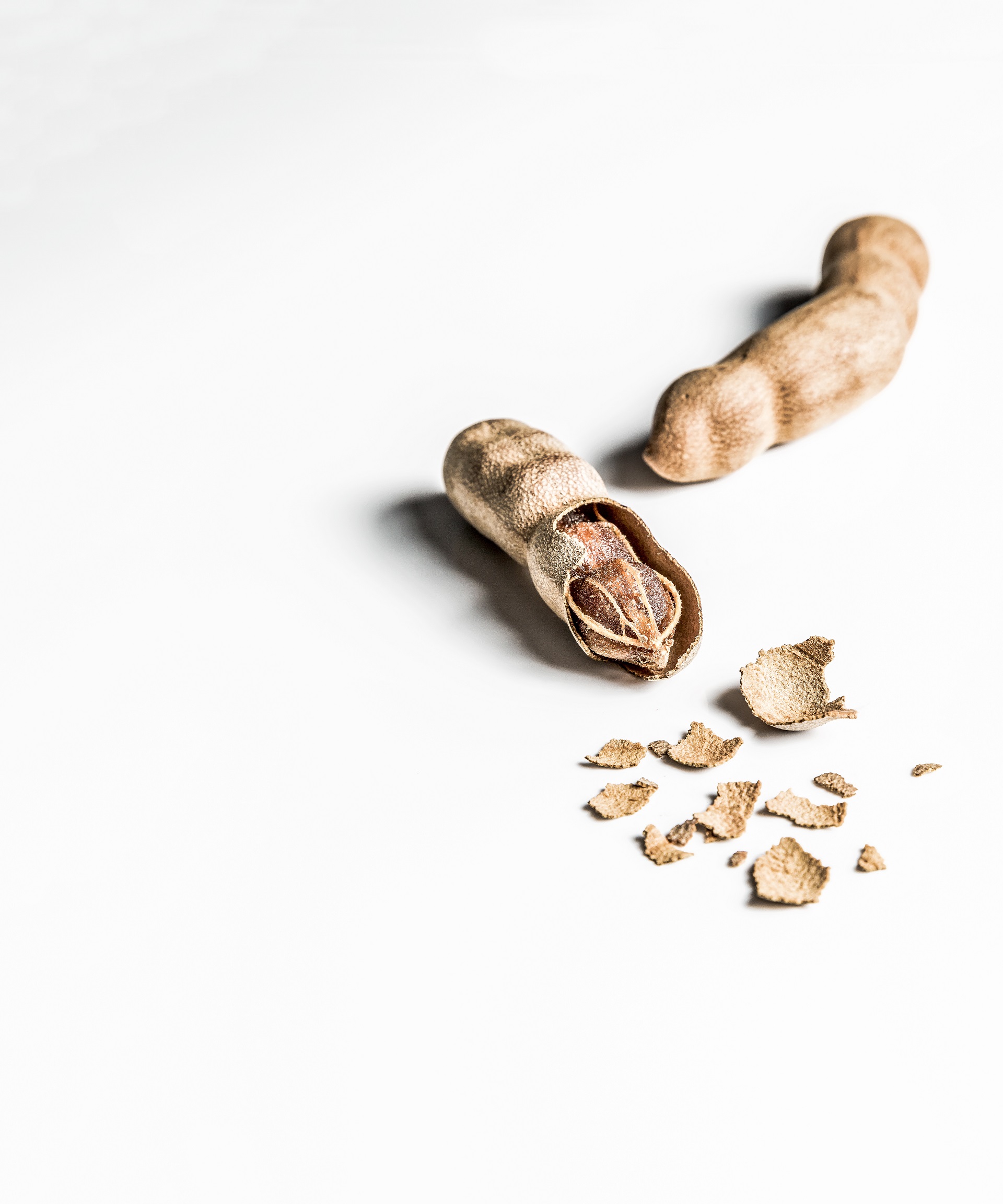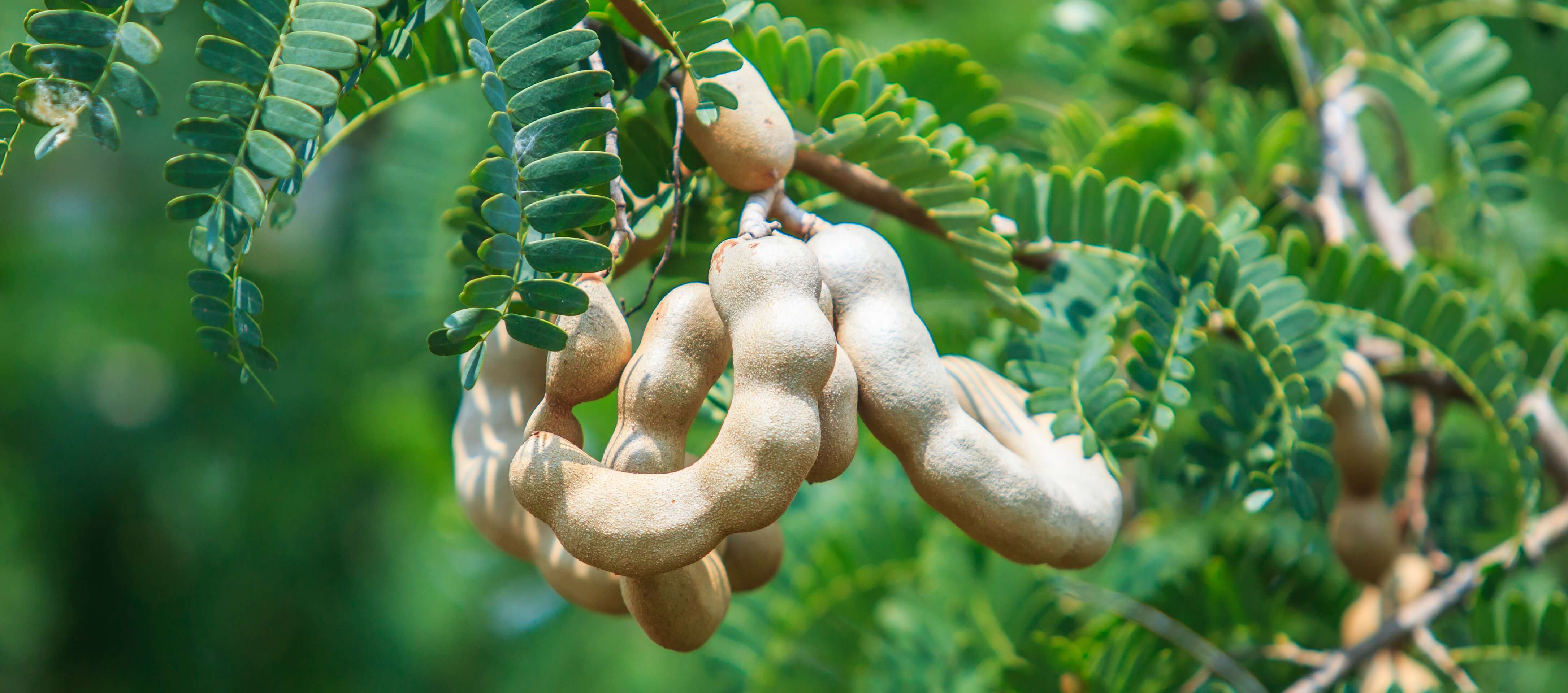In Africa and Asia, the evergreen tamarind tree, which can grow up to almost 100 feet, has been highly valued and used for many centuries. For example, they use its hard wood to make furniture, eat its flowers as vegetables or add them to salads and feed its pods to livestock. In India, the tree is even deemed sacred – according to legend, it’s what gives elephants their wisdom.
Besides the blossoms, the tree’s pods, which are between two to eight inches long, are particularly interesting from a culinary point of view. These pods harbor brown and reddish black seeds enclosed in a date-like pulp, which is used to extract the actual tamarind (available at R&S Gourmet Express, by the way). However, caution is advised: tamarinds with a brown pulp taste sweet, while those with a reddish black pulp have a surprisingly sour tang to their flavor.

Image: Claudio Martinuzzi
In the countries from which it hails, its paste, pulp or essence is used as a spice in chutneys, jams and soft drinks. In Thailand, the “Indian date”, as its name directly translates, is eaten as a candied confection seasoned with chili. In Europe, on the other hand, tamarind pulp appears in seasoning sauces such as the famous Worcestershire sauce.
But the all-rounder has even more to offer. Since the dried pod has a high pectin value, it can be used to make jellies. Tamarind seeds can be boiled or roasted to make the extract that gives many Asian dishes their dark color and spicy tart and sour flavor. Since it contains iron, magnesium, vitamin C and phosphorus, this multi-talented plant is also healthy.
In closing, there is one more important point to keep in mind: When consumed in large quantities, tamarinds act as a laxative.















